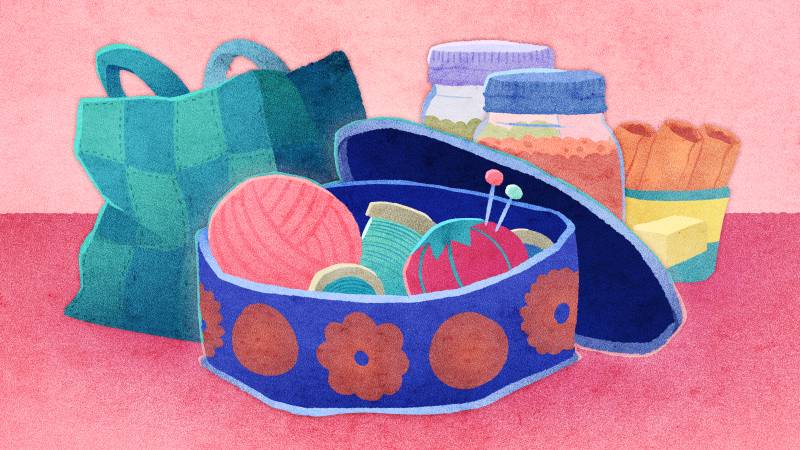For example, if you find yourself throwing out a lot of food scraps, consider composting. If you notice you have a lot of plastic bags piling up under your sink, start bringing reusable tote bags to the grocery store — and skip the little bag for fruits and veggies in the produce section. If you throw away a lot of plastic bottles for soap and shampoo, check your city’s recycling standards to see if they can be recycled, or switch to using bar soap and shampoo.
Hernandez noticed that he was using a lot of paper towels, so he switched to using reusable cloths instead. “I can wash them at the end of the day and they’re good to go,” he says.
Make changes that work for you and your lifestyle. If the idea of using cloth diapers for your baby sounds like way too much laundry — don’t do it. Find ways to cut waste in other aspects of your household.
2. Reuse your containers
A lot of low-waste solutions might seem like they require buying special containers like silicone replacements for your Ziploc bags or a matching set of jars to take to the bulk food section of your grocery store.
But you don’t need to spend money on those items, says Hernandez. Instead, look at the waste you already produce and figure out a way to reuse it. Maybe you can add a soap dispenser lid to a used Mason jar. Or perhaps you can be like my mom and use empty tins, boxes and other food containers to store leftovers or organize small items like nails or jewelry.
3. Salvage what you can
Beyond repurposing food containers, see if there’s anything else in your household you can save before tossing it in the trash, says Hernandez. Maybe you can mend an old pair of jeans instead of buying a new pair. Or maybe you can cut up old T-shirts into rags, which is what my mom used to do with my dad’s old tees. I do this now, too and the rags are perfect for cleaning up after fixing my bike — I don’t feel bad about getting grease on them.
And think about how you can creatively save your food scraps. If you have a bunch of overripe bananas, put it in the freezer to make banana bread later. Or transform an orange peel into a candle using vegetable oil.
4. Rely less on pre-packaged foods
Often, food comes in wasteful packaging. Mushrooms and tomatoes, for example, are packaged in Styrofoam containers covered in shrink wrap, and some beverages come in plastic jugs that may not be easy to recycle. So, Hernandez says, try to source your food in ways that don’t require you to take it out of a package.
That might mean making some of your own food from scratch. Instead of buying oat milk in a non-recyclable container at the store, Hernandez makes it at home by blending oats and water. The oat milk can be stored in a jar, eliminating the packaging waste.
You can also try sourcing your own food by growing a garden or looking for edible plants in your community. Foraging apps and local Facebook groups can help you identify what fruits, vegetables, greens and fungi are available in your area to eat.
5. Look for ways to cut waste outside the home
Once you start noticing how much trash you produce at home, you’ll start to see places to cut down on trash elsewhere. Opt for a digital receipt instead of a paper one. Bring your own reusable fork to a restaurant that uses single-use plastic utensils. Or ask your local barista to fill up your coffee mug instead of a paper cup.
And remember: Lowering the amount of waste you create doesn’t have to be an all-or-nothing pursuit, Hernandez says. Find changes that work for you, and you’ll be more likely to stick with them.
The audio was produced by Margaret Cirino and edited by Sylvie Douglis. The digital story was edited by Malaka Gharib. The visual producer is Kaz Fantone.

9(MDAxOTAwOTE4MDEyMTkxMDAzNjczZDljZA004))